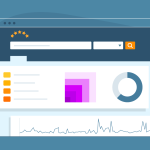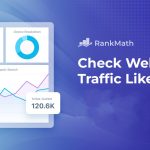A 401 error means that the page has been blocked from indexing by Google. This usually happens when pages contain hefty amounts of JavaScript and heavy media files.
The Crawled – currently not indexed error doesn’t tell you the reason for this, which is frustrating. However, you can use the URL Inspection tool to find out if there are any reasons for this.
Duplicate content
Duplicate content is one of the most common search console warnings. This occurs when the same content lives in multiple places on your website or even across different domains. This can be a result of a sub-par technical implementation or simply happen accidentally. For example, a page may have the same title tag and meta description as another, or a CMS might generate duplicate content when creating pages.
There are many ways to fix duplicate content, including using a rel=canonical tag or 301 redirecting to the correct version of your page. This is particularly important if you have multiple versions of the same page that compete with each other for search engine attention. However, some cases of duplicate content are harder to catch. This could be the result of scrapers republishing your blog content or product information from other sites. This is often a more serious issue that should be addressed by working with a professional SEO copywriter.
Non-HTML resources
A non-HTML resource is a file on your website that doesn’t contain any HTML elements. These can be anything from images to scans of PDFs. These can also include any scripts and files used by Javascript, ActiveX or Java applets on your page. If you see this warning, it means Googlebot was unable to load any non-HTML resources on the page, either because they were unavailable or because Googlebot could not get the credentials to access them. If this is the case, you should either allow access for non-signed-in users or explicitly grant Googlebot access to the page.
While it is a good idea to resolve any errors that appear in the Search Console, not every indexing error needs immediate attention. Some can be resolved over time, depending on the reason for the issue. In the meantime, make sure all your pages cover their topic thoroughly and are well optimized. It can be frustrating when you work hard to have a website that is indexed by Google and then discover it’s not appearing in SERPs for a variety of reasons.
Duplicate URLs
Duplicate content is one of the most common issues with SEO. While many people worry that it will lead to a manual penalty, the truth is that duplicate content is not necessarily harmful. In fact, it can even be beneficial if used sparingly. However, it is important to check for duplicate URLs and eliminate them if possible.
One of the easiest ways to check for duplicate content is to use Google Search Console. This tool will tell you which pages are indexed and which ones aren’t, as well as why they aren’t. It will also show you how to fix these issues.
There are several ways to fix duplicate content issues, including 301 redirects and rel=canonical tags. Canonical tags are snippets of code that specify the preferred version of a page. This will consolidate link authority and help search engines choose the right version of a page. For example, if you have a duplicate page with identical titles and descriptions, you can use a canonical tag to redirect the page to its preferred location.
Non-existent content
If you receive a 4xx status code, it means that the page was unable to be crawled during the indexing process because it requires credentials (login, password) and Googlebot is not able to provide these. This is most likely an issue with the website’s security configuration that is blocking Googlebot. If you want this page to be indexed, you should either allow access for non-signed-in users or explicitly allow Googlebot to enter the page without authentication. Otherwise, you should redirect the page using a 301 redirect to another relevant URL.
It may seem daunting to see a list of Search Console warnings, but there is usually a simple solution for most issues. Addressing these issues will ensure that your pages are indexed as they should be and won’t have any impact on your SEO performance. It is also important to understand which errors require immediate attention, and which don’t need any action at all. This way, you can focus your efforts in the areas where they are most needed.






